Predictions & Data for this entry
| Model: std | climate: MB, MC | migrate: Mo | phylum: |
| COMPLETE = 2.7 | ecozone: MAN, MAm, MAS | food: biCi, biCvf | class: |
| MRE = 0.135 | habitat: 0iMcd | gender: D | order: |
| SMSE = 0.035 | embryo: Mv | reprod: O | family: |
Zero-variate data
| Data | Observed | Predicted | (RE) | Unit | Description | Reference |
|---|---|---|---|---|---|---|
| ab | 690 | 625.1 | (0.09404) | d | age at birth | JoneGeen1977 |
| ap | 2190 | 2718 | (0.2411) | d | age at puberty | Avsa2001 |
| am | 2.92e+04 | 2.92e+04 | (3.169e-05) | d | life span | Steh2007 |
| Lb | 24 | 20.02 | (0.1657) | cm | total length at birth | JoneGeen1977 |
| Lp | 72 | 60.75 | (0.1563) | cm | total length at puberty | Avsa2001 |
| Li | 136 | 151.4 | (0.1135) | cm | ultimate total length (fem.) | Avsa2001 |
| Li_m | 121 | 122.7 | (0.01416) | cm | ultimate total length (males) | Avsa2001 |
| Ww0 | 35 | 37.94 | (0.084) | g | wet weight at start (egg) | YigiIsme2013 |
| Wwp | 950 | 911.9 | (0.04015) | g | wet weight at puberty | Avsa2001 |
Uni- and bivariate data
| Data | Figure | Independent variable | Dependent variable | (RE) | Reference |
|---|---|---|---|---|---|
| LW_f | 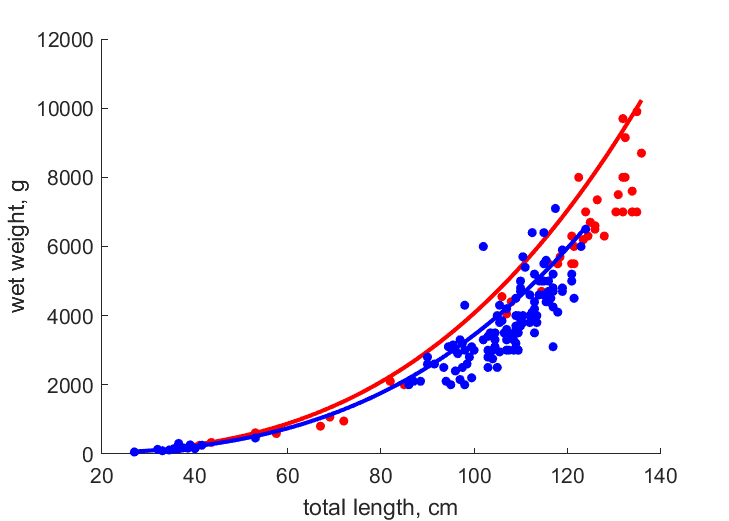 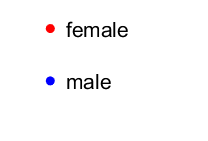 | total length | wet weight | (0.2132) | Avsa2001 |
| LW_m |   | total length | wet weight | (0.1809) | Avsa2001 |
| LW_f2 | 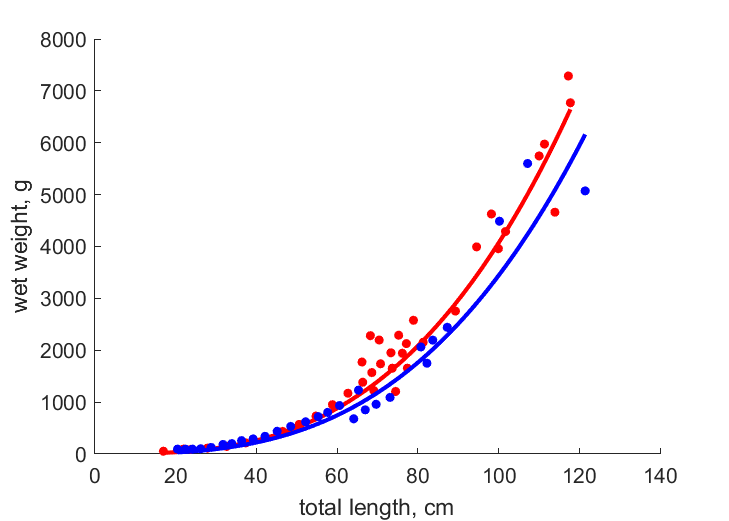 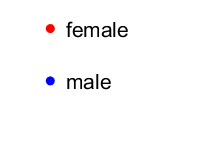 | total length | wet weight | (0.1289) | YigiIsme2013 |
| LW_m2 |   | total length | wet weight | (0.1996) | YigiIsme2013 |
| LN | 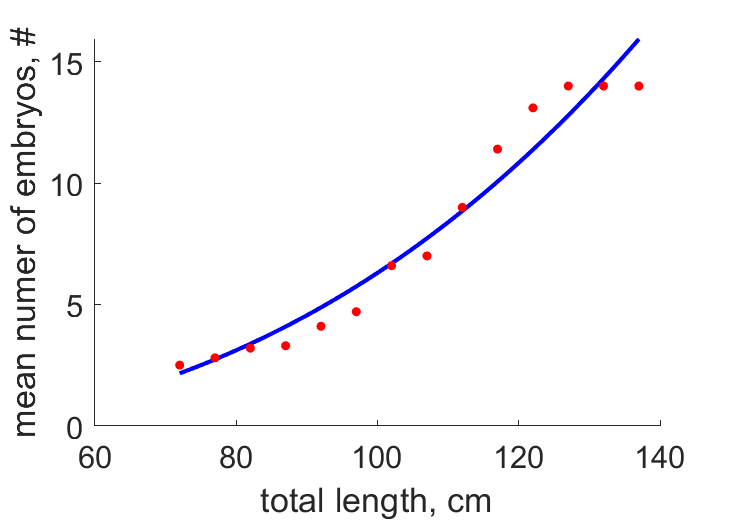 | total length | mean numer of embryos | (0.09723) | Avsa2001 |
| LW_e | 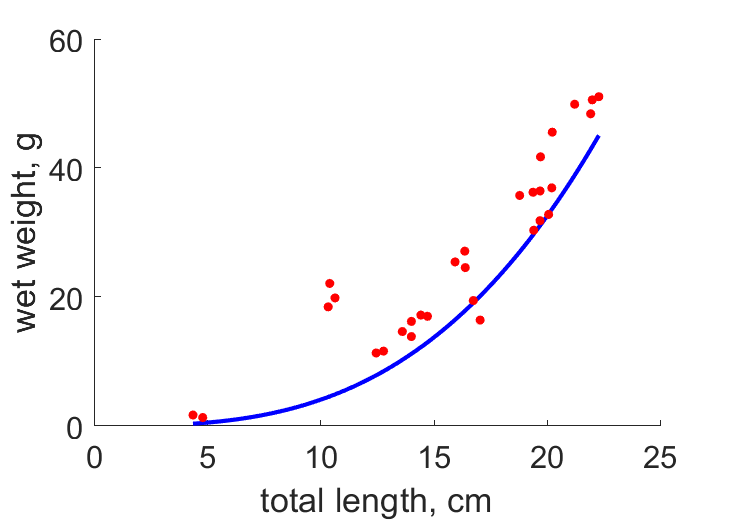 | total length | wet weight | (0.2275) | YigiIsme2013 |
| tLe |  | age | embryo length | (0.1512) | JoneGeen1977 |
| tYe |  | age | yolk volume | (0.1848) | JoneGeen1977 |
Pseudo-data at Tref = 20°C
| Data | Generalised animal | Squalus acanthias | Unit | Description |
|---|---|---|---|---|
| v | 0.02 | 0.02774 | cm/d | energy conductance |
| p_M | 18 | 34.36 | J/d.cm^3 | vol-spec som maint |
| k_J | 0.002 | 0.002 | 1/d | maturity maint rate coefficient |
| k | 0.3 | 0.3034 | - | maintenance ratio |
| kap | 0.8 | 0.8485 | - | allocation fraction to soma |
| kap_G | 0.8 | 0.8027 | - | growth efficiency |
| kap_R | 0.95 | 0.95 | - | reproduction efficiency |
Discussion
- males are assumed to differ from females by {p_Am} only - we use the max. observed values of males and females from Avsa2001, not the von Bert paramter that they estimate.
- predictions assume a mean temperature of 9 deg C
- t-L data from YigiIsme2013 and Avsa2001 not included because after a lot of testing the age-length relationship is incoherent point to errors in the ageing, possible different type of error of the young ones with respect to the older ones. Possible different type of error between the studies. YigiIsme2016 age free swimming individuals of 17 cm to be ca 300 d old while length at birth is reported at 24-26 cm. These age estimates suggest a very high p_M while the rest of the data do not support this.
- We use the actual length/ weight of smallest mature female in Avsa2001 and not the length where 50% were observed to be mature. We use the age estimate of sexual maturiaty from that study.
- Notice that egg weight is around 30 - 40 g (JoneGeen1977, YigiIsme2013) but that embryo weight around birth is > 50 g or more (YigiImse2013, fig. 6 of this AmP entry). This point to some external source of food from before birth. For this reason the slight discrepancy in predicted embryo length as function of time is acceptable.
- mod_3: males have equal state variables at b, compared to females
Facts
- main food species: demersal fishes like: whiting (Merlangius merlangus euxinus), red mullet (Mullus barbatus) and black goby (Gobius niger) were the commonest. Also some common shrip Cragnon cragnon) (Ref: Avsa2001)
- Ovoviviparous. Depth around 50-149m, but have been found deeper than 700m. (Ref: Wiki)
- spurdogs favor a temp of 7 - 15 C (Ref: Steh2007)
Acknowledgment
- The creation of this entry was supported by the Norwegian Science Council (NFR 255295)
Bibliography